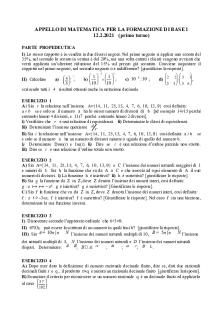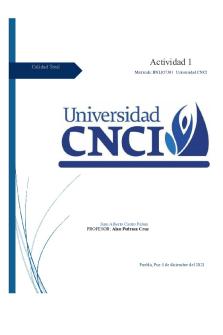FP003-SLA-Eng trabajo Rbossi MPmunoz G PDF

| Title | FP003-SLA-Eng trabajo Rbossi MPmunoz G |
|---|---|
| Author | Romina Bossi |
| Course | Second Language Acquisition |
| Institution | Fundación Universitaria Iberoamericana |
| Pages | 12 |
| File Size | 207.2 KB |
| File Type | |
| Total Downloads | 85 |
| Total Views | 129 |
Summary
Input versus Output are they genuinely endpoint?...
Description
Assignment - SLA
ASSIGNMENT: SECOND LANGUAGE ACQUISITION
GENERAL INFORMATION: This assignment consists of reflecting in pairs on the question below and has to fulfil the following conditions: -
Length: 5 pages (without including cover, index or appendices –if there are any-). Type of font: Arial or Times New Roman. Size: 11. Line height: 1.5. Alignment: Justified.
The assignment has to be done in this Word document and has to fulfil the rules of presentation and edition, as for quotes and bibliographical references which are detailed in the Study Guide. Also, it has to be submitted following the procedure specified in the “Subject Evaluation” document. Sending it to the tutor’s e-mail is not permitted. In addition to this, it is very important to read the assessment criteria, which can be found in the “Subject Evaluation” document.
1
Assignment - SLA
Assignment: According to Swain, ...producing the target language may be the trigger that forces the learner to pay attention to the means of expression needed in order to successfully convey his or her own intended meaning. (Swain 1985: 249) In Swain's view, learners need not only input, but output: they need to use language in order to learn it. Krashen, however, as recently as 2009, stated that: Research done over the last three decades has shown that we acquire language by understanding what we hear and read. The ability to produce language is the result of language acquisition, not the cause. Forcing students to speak English will not improve their ability to speak English. (Korea Times, 2009).
“Is it possible to reconcile these two seemingly opposite views as to what constitutes second language acquisition or ‘learning’, as Swain puts it? Or do the two views represent two extremes of both theory and practice?” Guidelines: To answer this question in essay form, you will need to refer to alternative concepts of acquisition and learning proposed by other theorists, judge them in relation to these two apparent extremes of input versus output, and then try to draw some conclusions. You must ensure that both Krashen and Swain are discussed within the broader framework of SLA theory, and thus demonstrate that you understand the general field.
Important: you have to write your personal details and the subject name on the cover (see the next page). The assignment that does not fulfil these conditions will not be corrected. You have to include the assignment index below the cover.
2
Assignment - SLA
Assignment: Students’ names: Romina Bossi Mejia Paulina Muñoz Gallo Group: FP007 2021-02 Date: June 29th 2021
Input versus Output are they genuinely endpoint?
3
Assignment - SLA
CONTENTS
INTRODUCTION
5
ANALYSIS
6
CONCLUSION
11
BIBLIOGRAPHY
12
4
Assignment - SLA
Input versus Output are they genuinely endpoint?
Second language acquisition is a scientific discipline devoted to study the process in which people learn a second language. SLA investigates the product, process and environment of language acquisition, insights of this finding full pedagogical approaches to teaching practices. In the field we are able to mention several insights of numerous theories and researchers related to this topic, that is the reason why we are going to make a parallel between two apparently opposite views which overlap in a singular point. On one hand, Swain’s hypothesis states that learning takes place when learners encounter a gap in their linguistic knowledge, they become aware about it and are able to modify their output, using this method they are able to obtain their final goal that is the acquisition of a second language. On the other hand, Krashen attempts to explain about how the learner acquires knowledge and how it takes place. According to Krashen’s theory of language acquisition, giving learners specific input helps them to acquire language naturally, rather than learn it consciously. Furthermore, we will refer to some alternative concepts proposed by other theorists whose research will be criticized according to the main remarkable theories previously mentioned. Therefore, in this essay, both prominent insights will be analyzed along with other expert’s views who have fewer extreme positions about the process of acquiring a second language.
5
Assignment - SLA
At first sight it is not possible to reconcile both apparently opposite views of second language acquisition, but giving a second thought, we might be able to see an overlap of concepts in both Krashen’ comprehensible input and Swain’s comprehensible output hypothesis. According to our experience in real life situations, inside and outside the classroom, we are able to mention that both theories of acquiring a second language are extremely important to gain the final goal, that is to learn a second language effectively. There are numerous of theorist’s with innovative insights which are relevant to support both ideas. In general, all theories of SLA analyze input from their own perspectives, we are not able to discuss it, without explaining that input may vary according to the way of exposure, that can be in a natural setting, or formal instructional one. For instance, we can mention the behaviorism theory by Skinner and Brunner that stresses the importance of input, this is about presenting the L2 in the correct amount to the learner, in order for them to learn automatically by creating a series of habits. Behaviorist theory explains how the environment affects in terms of what is happening outside the learner, in other words the vital importance of the environment in the process of learning. “An operant is defined as a form of behavior in which the behavior of the organism leads to a stimulus which presents rewards ...Only the right operant is rewarded.” Stern (1983:315)
6
Assignment - SLA
Behaviorism postulates that a student’s learning is reinforced when, after a certain behavior, they get what they want or are rewarded in some way, which is known as "Positive Reinforcement", by contrast, when the behavior of a student is not desired, s/he can be punished or simply not enforced, often described as "Negative Reinforcement."
The students’ learning will depend almost entirely on the relationship and dedication of the instructional teachers around them, as this implies the teacher must be attentive to each learner’s behavior, constantly strengthening the right and ignoring or punishing the wrong in some opportunities.
In the field of pedagogy, the second language teacher must be a constant example to the learner inside the classroom, both in pronunciation and use of grammatical structures and the inclusion of new terms and vocabulary that the students can include in a gradual and progressive learning.
The concept of input is extremely relevant; it has pedagogical implications in terms of methodology and the type of syllabus to be used by the second language teacher. Stephen Krashen (1982) raised five hypotheses to achieve the second language acquisition, these are: Acquisition-Learning Hypothesis, Self-Monitoring Hypothesis, Natural Order Hypothesis, 'Input' Hypothesis, and the Affective Filter Hypothesis:
- Acquisition-Learning: It determines that there are two ways to develop competences in SLA, the first one is Acquisition (subconscious process) and the second one is learning (conscious process of grammatical rules) - Self-Monitoring: It is related to the task of correcting and learning beginning from the mistakes and the different styles that each student has to reflect on his/her own process of acquisition and how he/she seeks assistance from the teacher. The goal for students is to become able to identify those situations in which the result is an inconsistent or incorrect interpretation and analyze the reasons for the error. There are three types of learners with respect to the use of the monitor (teacher): • Monitor abusers • Those who do not use the monitor • Those who use the monitor properly
7
Assignment - SLA
- Natural Order: It is argued that human beings have an internal processor in the second language acquisition and it is reactivated in conditions that facilitate the acquisition. Communication is the main subject. - Input: Stresses the need for linguistic materials that should be given in the target language. It is efficient to produce a sufficient exposure to materials that are relevant of interest to the receiver and understandable (comprehensible input). In the case you are not available with these materials there is a high percentage of unknown vocabulary, so the text will not be understandable and the process of acquisition will be difficult to advance. - Affective Filter: It is the need to execute the acquisition process when you get a sense of self-confidence and security in yourself and the feeling of being able to start producing. The idea is to create in the classroom a tension-free situation in which the student does not feel pressured to produce results according to a forced stage. When the filter is high (anxiety), there is a mental block that hinders the student from receiving comprehensible input and, therefore, acquisition is not produced. The filter must be low (anxiety) so that the student is open to the input, and he/she can be involved and feel as an important part of the learner. However, if you consider that you need the comprehensible input to be delivered and you need the affective filters to be low enough for the input to make its way to the brain connections, you are also affecting the output. When you line up the input and the filters, the output produced speaking and writing, it will show learners’ progress. These outputs also require attention to the affective filters since you have to make learners comfortable enough to produce output in the second language. These theories together illustrate how to understand the complex spectrum of Second Language Acquisition. In connection the last mention theory we can find Swain's output hypothesis; output is closely related to the process of language production, he states that learning takes place when a learner encounters a fissure in his or her linguistic knowledge of the second language, the learner becomes aware of this, and may be able to modify his/her output. S/He instantly learns something new about the language. “The output hypothesis claims that the act of producing language, (speaking or writing) constitutes under certain circumstances, part of the process of second language learning” (swain n.d)
8
Assignment - SLA
The comprehensible output (CO) hypothesis states that we acquire language when we attempt to transmit a message but fail and must try again, eventually we use the correct form of our utterance, our conversational partner understands, and we acquire this new form we have produced. For Swain, constant practice facilitates the learner to be conscious of his/her production, output makes it possible to move the learner from the semantic process to the complete grammatical process for accurate production. Here it is where feedback gets into action, feedback is extremely relevant, especially, because it is one of the few settings in which students have contact with the language and they need some advice and corrections for the improvement of their production. Moreover, Chomsky questioned this theory explaining that in some specific cases there is no relation between the type of language to be observed in input, and the real amount of language the learner produced, as a result there is no correlation between input and output. Chomsky was a firm believer that learners process the information they obtain through the LAD, minimizing the role of the linguistic environment.as itself “The learning of a second language is not the result of a single factor, but of several variables of different types: contextual (environment), plus individual or personal (age, cognitive style, intelligence, aptitude, attitudes and motivation, personality, affective factors, learning opportunities, type of instruction, etc.).” Skeahan (1989:120) Learning a second language is a result of an entire world of diverse variables that we must take into consideration, not only as a single factor, but also the whole picture. We can consider some theorists that focus more on the context of environment but we can find some others that consider personal reasons and factors to finally achieve the learning. Schumann, for instance, focuses in terms of contexts, sociocultural factors and how these influence on the acquisition of a second language. He states that acculturation implies psychological and social distance between the language culture and the learner. In this acculturation process, two important factors play a special role on acquisition, on one hand social distance, and on the other hand psychological one. In a social context we may be able to find eight variables, but we are going to focus on the idea that, the greater the distance, the harder it is to learn a second language, that is to say that the smaller the social distance, the easier the second language learning will be.
9
Assignment - SLA
On the other side we find another factor, psychological distance, that has some other internal variables too, as motivation, attitude and cultural shock. For instance, if a person moves from Chile to London, s/he expects to stay there for a long period of time, and s/he really wants to learn the language. This person will probably have less social distance because his/her plan is to stays there for a long time, s/he is really excited to learn, that is to say a higher motivation, less psychological distance. As a result, since both, social and psychological distances are low it is very predictable that s/he will have an easier time learning a second language. Skehan and Schumman have some similarities in their proposals and variables that influence the acquisition of a second language. We can also illustrate that Andersen in 1979 lineup some of Schumman’s principles and deliver a new vision, he emphasizes on the internal mechanism of each learner. According to the nativisation model we have two main factors: nativization and denativization, here we are back with the concept of input and how the learner conforms to his/her own vision about what constitutes an L2 system. Denativization is about learners adjusting his/her system to suit input and remodel it. Here is where the role of a second language teacher takes its importance. All these theorists made a great effort to grant teachers the necessary tools (theory) to use inside the classroom (practice). Nowadays, teachers are able to find useful teaching strategies according to the diverse stages of their learners, an experienced instructor will use all this as an opportunity to offer to their students the most suitable strategy to acquire the language, not only by the production of output but also with the incorporation of input into their brains.
10
Assignment - SLA
After reading, analyzing and debating through different theories and theorists, we realized that there are several insights of numerous theories and researchers therefore, we could make a parallel between two apparently opposite views which effectively overlap in a singular point. Besides, not only one theory is important, but also all the theories have to work together in order to achieve the second language acquisition. We cannot choose or work with our students with only one theory, since, and as we mentioned before, there is a whole universe of learners, with different way of learning, that is why, teacher must involve all the strategies, covering the theories, that is to say, students feel comfortable with the environment and, consequently obtain the second language acquisition. Therefore, in this essay, both prominent insights have been analyzed along with other expert’s views who have fewer extreme positions about the process of acquiring a second language.
11
Assignment - SLA
BIBLIOGRAPHY
[1] Chomsky, N. (1976). Reflections on Language. [2] Chomsky, N. (1986). Knowledge of language: its Nature, Origin and Use. [3] Krashen, S. (1982). Principles and Practice in Second Language Acquisition. [4] Krashen, S. (1985). The Input Hypothesis: Issues and Implications. [5] Schumann, J. (1978). The Acculturation Model for Second Language Acquisition. [6] Skehan, P. (1983). Individual Differences in Second Language Learning. [7] Stern, H. H. (1983). Fundamental Concepts of Language Teaching. [8] Swain, M. (1985). Communicative competence: Some roles of comprehensible input and comprehensible output in its development. Input in second language acquisition.
12...
Similar Free PDFs

Trabajo G&T conticredit
- 37 Pages

Trabajo Final - J. Zarate G
- 32 Pages

Assignment 1 - g g
- 3 Pages
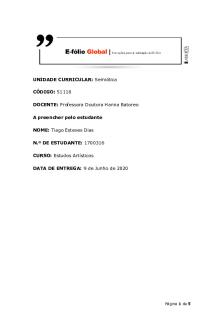
Efolio G
- 5 Pages
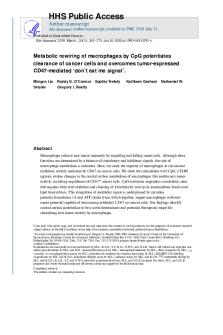
Cp G
- 30 Pages

G Greene
- 4 Pages

G. mikroba
- 15 Pages

Resumen MGA (factor g)
- 4 Pages
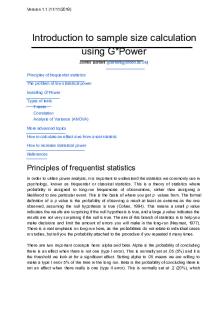
G Power Guide
- 35 Pages

G blatt 6
- 3 Pages
Popular Institutions
- Tinajero National High School - Annex
- Politeknik Caltex Riau
- Yokohama City University
- SGT University
- University of Al-Qadisiyah
- Divine Word College of Vigan
- Techniek College Rotterdam
- Universidade de Santiago
- Universiti Teknologi MARA Cawangan Johor Kampus Pasir Gudang
- Poltekkes Kemenkes Yogyakarta
- Baguio City National High School
- Colegio san marcos
- preparatoria uno
- Centro de Bachillerato Tecnológico Industrial y de Servicios No. 107
- Dalian Maritime University
- Quang Trung Secondary School
- Colegio Tecnológico en Informática
- Corporación Regional de Educación Superior
- Grupo CEDVA
- Dar Al Uloom University
- Centro de Estudios Preuniversitarios de la Universidad Nacional de Ingeniería
- 上智大学
- Aakash International School, Nuna Majara
- San Felipe Neri Catholic School
- Kang Chiao International School - New Taipei City
- Misamis Occidental National High School
- Institución Educativa Escuela Normal Juan Ladrilleros
- Kolehiyo ng Pantukan
- Batanes State College
- Instituto Continental
- Sekolah Menengah Kejuruan Kesehatan Kaltara (Tarakan)
- Colegio de La Inmaculada Concepcion - Cebu

![Quantization energy lab report er g g g g g g g g g g g g g g g g g g g g g g]\\](https://pdfedu.com/img/crop/172x258/og2v1qo08824.jpg)
